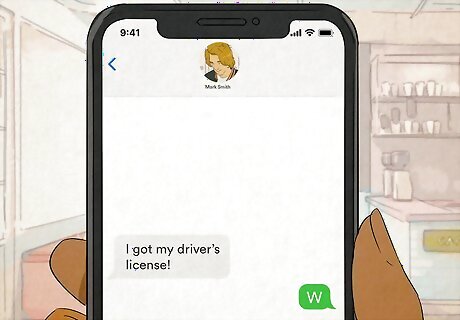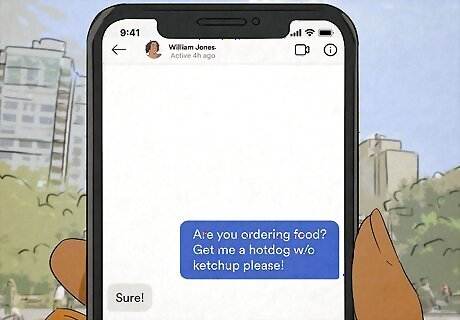
views
- “W/” is an abbreviation for “with.” It appears over text, on social media, in handwritten notes, or even in casual communications at work like Slack messages.
- A “W” without a slash can mean either “with” or “win.” If it means “win,” you’ll probably see it by itself or in the context of a celebratory message.
- Use “W/” in texts, notes, tweets, recipes—you name it! Steer clear of it in formal or important professional writing, though, and just write out “with.”
Meaning of “W/” or “W”

“W/” is shorthand for “with” online or on paper. Even though “with” is already a short word, “W/” is still faster to write by hand and uses fewer characters when it’s typed out. It can be capitalized or lowercase (“w/”), and can appear without a slash (“w”) or with a period instead (“w.”). “W/” shows up in informal writing like text messages, social media, handwritten notes or instructions, recipes, apartment listings, or even casual Slack messages and emails at work. “For rent: Renovated 1-bed apartment w/ great view of downtown” “Chop 1 potato w/ skin on” “Let’s ride w David since he’s leaving earlier.” “I’m on my way to the store w. Karen”
Alternate Meaning of “W”

“W” (without a slash) can mean “win” or “winning” over text or online. If you see a plain “W” by itself or as part of a celebratory sentence in a text or on an app like TikTok or Twitter, chances are the user means “win” or “winning.” This meaning comes up almost exclusively online (although you might hear someone say something like “We got the ‘dub!” out loud, where “‘dub” is a shortening of “double-u”). Similarly, you might see “L” as shorthand for “loss” or “losing.” “I got a promotion today! ???? Can I get a W in the group chat!?” “Cubs get the W!” Person A: “I got my driver’s license!”Person B: “W!”
Using “W/” & “W”

Type or write “W/” in place of “with” in informal communications. Use “W/” any time you’d use “with” in a sentence (it’s that flexible!). Type it when you’re posting on social media, texting, writing quick notes during class or a meeting, or leaving instructions for your dog sitter. Only abbreviate “with” in casual messages, though—it’s best to avoid it in formal or professional writing and use the full word “with.” “Let’s go on a walk w/ Richard today!” “Give my puppy her vitamin w/ dinner when you watch her”

Use “W/O” to mean “without.” Add an “O” after the slash in “W/” to form the abbreviation for “without” and use “w/o” the same way you’d use “w/.” Throw it in casual texts or messages, tweets or other social media posts, notes, instructions, or any other scenario where you need to save some space or characters. “Are you ordering food? Get me a hotdog w/o ketchup please!” “Hurry up or we’re leaving w/o you!”

Throw a “W” in the chat to celebrate a win over text or online. Reply to someone’s text with “W” or leave a “W” comment on a tweet or TikTok video to congratulate others. Post “W” by itself to use it as an exclamation (“Winning!”) or use it as part of a full sentence (“The Bears take the W!”). Try using some emojis to keep things fun and celebratory! “Nice job at your track meet today. Congrats on your W!” Them: “Here’s a pic of my outfit for the awards show!”You: “W!”
Origins of “W/”

“W/” probably came from handwritten fast food orders in the 1950s. As speed became more important for restaurant workers, servers began using shorthand to take orders by hand. “W/” and “W/O” were quick and easy to understand ways to say “with” and “without” when customers wanted to customize their meals by adding or taking off ingredients. Handwritten orders might say something like: “1 burger w/o cheese” “Cobb salad w/ extra dressing”














Comments
0 comment